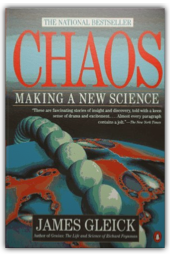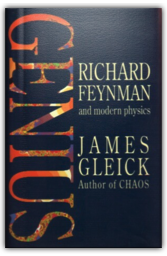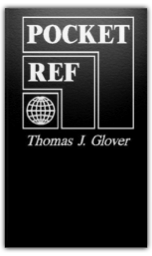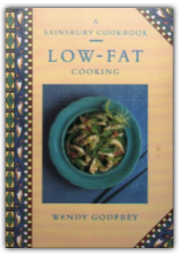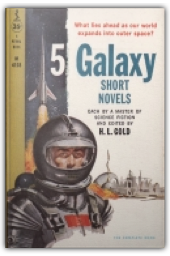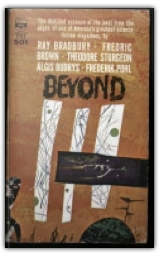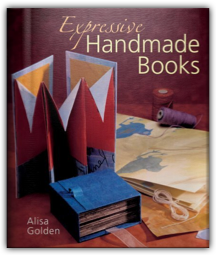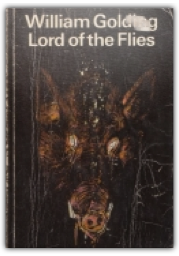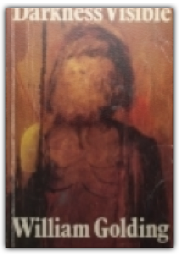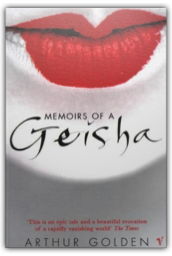 Memoirs of a Geisha
Arthur Golden
Memoirs of a Geisha
Arthur Golden
According to Arthur Golden's absorbing first novel, the word "geisha" does not mean "prostitute," as Westerners ignorantly assume—it means "artisan" or "artist." To capture the geisha experience in the art of fiction, Golden trained as long and hard as any geisha who must master the arts of music, dance, clever conversation, crafty battle with rival beauties and cunning seduction of wealthy patrons. After earning degrees in Japanese art and history from Harvard and Columbia—and an M.A. in English—he met a man in Tokyo who was the illegitimate offspring of a renowned businessman and a geisha. This meeting inspired Golden to spend 10 years researching every detail of geisha culture, chiefly relying on the geisha Mineko Iwasaki, who spent years charming the very rich and famous.
The result is a novel with the broad social canvas (and love of coincidence) of Charles Dickens and Jane Austen's intense attention to the nuances of erotic maneuvering. Readers experience the entire life of a geisha, from her origins as an orphaned fishing-village girl in 1929 to her triumphant auction of her mizuage (virginity) for a record price as a teenager to her reminiscent old age as the distinguished mistress of the powerful patron of her dreams. We discover that a geisha is more analogous to a Western "trophy wife" than to a prostitute—and, as in Austen, flat-out prostitution and early death is a woman's alternative to the repressive, arcane system of courtship. In simple, elegant prose, Golden puts us right in the tearoom with the geisha; we are there as she gracefully fights for her life in a social situation where careers are made or destroyed by a witticism, a too-revealing (or not revealing enough) glimpse of flesh under the kimono, or a vicious rumour spread by a rival "as cruel as a spider."
Golden's web is finely woven, but his book has a serious flaw: the geisha's true romance rings hollow—the love of her life is a symbol, not a character. Her villainous geisha nemesis is sharply drawn, but she would be more so if we got a deeper peek into the cause of her motiveless malignity—the plight all geisha share. Still, Golden has won the triple crown of fiction: he has created a plausible female protagonist in a vivid, now-vanished world and he gloriously captures Japanese culture by expressing his thoughts in authentic Eastern metaphors.
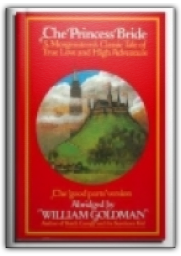 The Princess Bride
William Goldman
The Princess Bride
William Goldman
First published well, in 1973 actually, this book spawned the Rob Reiner-directed cult film of the same name. It's a tongue-in-cheek fairytale of love, life, action, death and life again. Featuring the obligatory handsome Prince and supremely beautiful princess, it also boasts a Spanish sword wizard, the Zoo of Death, a chocolate-coated resurrection pill and lots of villains, who span the spectrum from evil, through even more evil to (gasp) most evil. And then there's Fezzik, the gentle giant addicted to rhyming.
William Goldman—who—who's won two Oscars for his screenwriting (Butch Cassidy and the Sundance Kid and All the President's Men), and has endeared himself to dentists and their patients planetwide through his novel Marathon Man—has always claimed he merely abridged this text, extracting the "good parts" from an inventive yet wordy classic by Florinese literary superstar, S Morgenstern.
It has, however, been whispered in certain circles that Morgenstern himself is a figment of Goldman's ultra-fertile imagination. Read Goldman's original and special Anniversary introductions and make up your own mind. Oh—and don't forget his explanation as to why he's only "abridged" the first chapter of the sequel Buttercup's Baby—which appears here for the first time—and why it took him so long to get round to it.
Completely delightful, suitable for cynics and romantics alike. Suspension of disbelief optional. — Lisa Gee
|
 Memoirs of a Geisha
Arthur Golden
Memoirs of a Geisha
Arthur Golden
 The Princess Bride
William Goldman
The Princess Bride
William Goldman
 Made with Delicious Library
Made with Delicious Library
